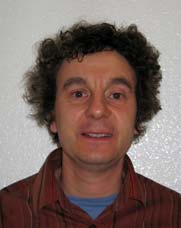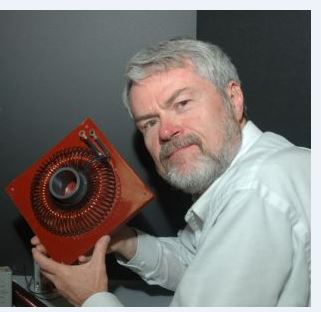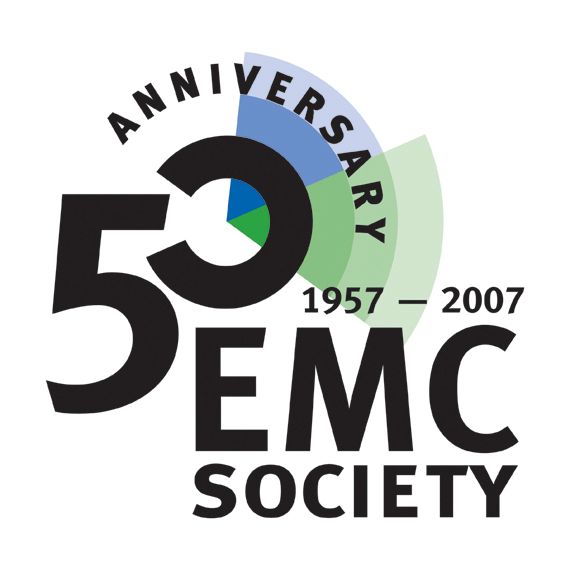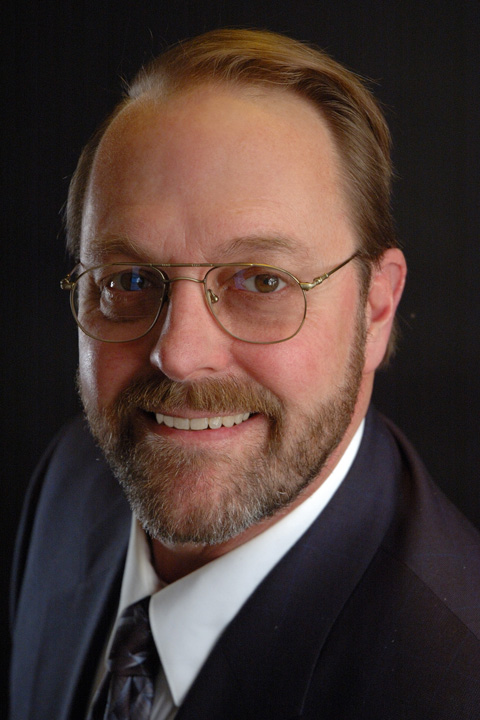2009 Meetings
The linked titles of some meetings are the presentations speakers provided.
December 8, 2009: "Near Field Scanning Techniques: Nice Pictures, So What?" Prof. David Pommerenke, Missouri University of Science and Technology
Abstract: In the near field of PCBs and modules, a few types of EMC analysis have been done:
- near field emission scan, determines the EM field close to an IC, module or product
- near field radiated immunity scan, identifies areas locally sensitive to RF fields
- near field ESD pulse immunity scan, identifies areas locally sensitive to ESD
- resonance analysis, determines the location, resonant frequency and Q-factor of resonating structures on PCB and it systems.
- ESD current spread analysis, identifies how the current spreads on a PCB and how resonances are excited for different ESD test points
They all produce nice pictures, so what? What can we learn from them? How can we use these tools? The talk will briefly introduce the scanning methods. Then it will be shown how each method can help to solve (debugging), avoid (module qualification) and understand system level problems, and illustrate limits of the methods. This includes pointing out often met misunderstandings about the meaning of those colorful plots created by scan systems.

Bio: Dr. David Pommerenke approaches EMC from the measurement side. His research interests are system level ESD, numerical simulations, EMC measurement methods and instrumentations. He received the Ph.D. from the Technical University Berlin, Germany in 1996. After working at Hewlett Packard for 5 years he joined the Electromagnetic Compatibility Laboratory at the Missouri University of Science and Technology in 2001 where he is a tenured professor now. He has published more than 100 papers and is inventor on 10 patents. Besides other professional activities, he is the US representative of the ESD standard setting group within the IEC TC77b. He has been a distinguished lecturer for the IEEE EMC Society in 2006 - 2007.
November 10, 2009: "Magnetic Devices for EMC, SI, and Other Things" Orin Laney
Abstract: Coils, chokes, inductors, transformers, baluns, and beads are workhorse components for EMC and SI work. Many see them as little black boxes that can magically solve certain problems, though they might offer no relief whatsoever if misapplied. As one of the few components that engineers routinely custom design - if they know how - understanding magnetic devices is a powerful advantage in our field. Our November speaker will review the basic principles and equations of magnetic circuits, discuss representative devices, show working examples, and offer some interesting case histories.

Bio: Orin Laney is an independent consultant based in Santa Clara, CA. He bought his first coil winding machine as a teenager. Since then he has worked on coils so large that the wire has to be pounded with a mallet to conform it to the coil form to ones so small that an 8 henry choke is comparable to the eraser of a pencil. He has extensive experience with RF processing and instrumentation, cabling design, grounding and shielding, and design for SI performance and EMC compliance. Mr. Laney earned his BSEE at the University of Maryland, his MBA at Brigham Young University, is a NARTE certified EMC engineer and a California licensed PE. Among other topics, he teaches a public course in magnetics design through seminar provider Besser Associates and is authoring a book on high frequency magnetic components.
October 15 - 16, 2009: SCV-EMC 2009 Mini Symposium
Abstract:
October 15 - 16: "Proper PCB Design for Signal Integrity and EMC Control" by Dr. Bruce Archambeault
Morning Session: 8:00 AM - 12:00 PM
- Introduction to General SI/EMC
- What is Inductance?
- Full Definition
- Partial inductance
- Incomplete Inductance
- The Ground Myth
- Where Does the Current Flow?
- Plane discontinuities
- Vias
- Mother/Daughter Cards
- Pseudo-Differential Nets
- Return Current Spread
- I/O Filter Design
Afternoon Session: 1:00 PM - 5:00 PM
- Power Integrity & Decoupling Power/Ground planes
- Source of Noise
- Board resonance issues
- Decoupling capacitor values
- Timely charge delivery
- Decoupling capacitor connection inductance
- Predicting Noise source levels
- Mixed mode PCB design
- RF, digital and analog
- Shielding
- How does shielding really work?
- SI and EMC issues for high speed differential cables
- Skew
- Rise/fall time mismatch
- Weak link
- Using Signal Integrity tools for EMC design
- Other software tools for EMC design
Bios: Dr. Bruce Archambeault is an IBM Distinguished Engineer at IBM in Research Triangle Park, NC. Dr. Archambeault has authored or co-authored a number of papers in computational electromagnetics, mostly applied to real-world EMC applications. He is currently the IEEE EMC Society Technical Activities Chair, a past member of the Board of Directors for the IEEE EMC Society, and a past member of the Board of Directors for the Applied Computational Electromagnetics Society (ACES). He has served as a past IEEE EMC Society Distinguished Lecturer. He is the author of the book "PCB Design for Real-World EMI Control" and the lead author of the book titled "EMI/EMC Computational Modeling Handbook."

The above clickable picture slideshow illustrates some of the event and some of the lucky raffle winners (not all
vendors/winners are featured)
SCV-EMC Chapter organized a successful Mini-Symposium at the Hilton Santa Clara on Oct 15th & 16th, 2009. Dr. Bruce Archambeault, an IBM distinguished Engineer in Research Triangle Park, NC share with us the Electromagnetic Effects in Practical PCB Design. Twenty-one vendors also came to show us their newest technology or where we can rent them.
Everyone had a great time with over 70 participants including students, professionals, retirees and unemployed.
Lunches and reception were beautifully served and organized. Raffles consisted of chocolate from Electromagnetic lab, EMC rule checking software from IBM, gift cards from TUV SUD America, In Compliance and AR, etc.
Special thanks to Janet O'Neil for all the liaisons, Apple and Lockheed Martin for bringing their numerous engineers to the event and the SCV-EMC committee and volunteers.
We thank again everyone for coming and our chapter/event sponsors and let's make our next event even more successful.
September 8, 2009: "Fundamentals of EMI Prevention" Chris Herrick, EMI Application Engineer, ANSYS, Inc.
Abstract: EMI continues to be a challenging problem for high speed electronics but preventing it is no longer the Black Magic of years past. Proper Signal and Power Integrity are crucial to first pass chamber success. This presentation will provide an introduction to EMC and the root causes of EMI related to Package and PCB design. Capacitor placement, plane impedance, current return path and common mode conversion will be discussed. Various simulation and measurement results from real world designs will be shown.

Bio: Chris Herrick received his BSEE from Tufts University near Boston Massachusetts. His first work experience came as an intern for Digital Equipment Corporation over the summers while an undergrad. He worked in the Signal Integrity team and performed board and system level analysis. Chris then went on to receive his MSEE from Stanford University in Palo Alto, California. His focus was on Communication systems. While attending school, Chris worked at Hewlett-Packard in the Signal Integrity team for server development. Post Graduation, he worked for Sanmina-SCI performing SI analysis, writing white-papers and developing via-technology patents. He joined Ansoft Corporation in 2004 and is currently a Technical Lead in the San Jose area. Since joining Ansoft, Chris has become the resident expert on practical EMI simulations and has organized two technical seminars on EMC.
June 25, 2009: Co-sponsored by SCV-CPMT "License to Speed: Extreme Bandwidth Packaging" by Sean Cahill, VP-Technology, BridgeWave Communications
Abstract: As device operating frequencies increase, packaging engineers look to interconnection methods that provide better signal transmission properties for high-volume applications. Next-generation interconnect approaches such as wireless and optical are areas garnering increasing research dollars, but are in practicality many years away. Flip-chip is limited as an approach because it does not address cross-talk issues without numerous extra bumps dedicated to shielding. These approaches are considerably more expensive and less flexible than wire bonding, the dominant player, either because of tooling costs or added labor-intensive steps.
This talk will describe a new interconnect approach, MicroCoax, with the capability to create high-bandwidth interconnects for increasingly higher frequency digital and analog electronics systems. Prototype devices show excellent performance over DC-100+ GHz frequency range. Transmission line losses less than 0.5 dB, 160 µm pitch, and cross-talk isolation of approximately 40-50 dB from DC-50 GHz are demonstrated. The technology has implications for improved package design, and these design implications will be discussed. In particular, low-cost QFN packages capable of operating to 80 GHz and beyond will be shown. Such a package could propagate 150 Gbps data-rate signals on a single channel.
Since the package structure is broadband, it allows for a variety of chipsets to be assembled using the same process sequence and I/O configuration, thereby eliminating costly overhead. With less than 0.5dB insertion-loss and >15dB return-loss per interconnect at 50GHz, a 5x5mm microCoax QFN package allows existing bare-die only applications to enter the world of high-speed PCB assembly, significantly driving down the cost of high-frequency systems. Process technology, I/O performance, active device performance, PCB board material selection and test protocol will all be discussed.
Bio: Sean Cahill is VP, Technology at BridgeWave Communications where he is working on next generation millimeter-wave systems. Sean earned his MSEE/Solid State Physics from UC Santa Barbara where he fabricated some of the first surface micromachined MOEMS (Micro-opto-electro-mechanical systems). His undergraduate work entailed dual BS degrees in ECE/Signals and Systems and Biochemistry/Biophysics from UC Davis. Over his more than 20 years in industry, Sean has applied his multi-disciplinary expertise at numerous research and product development companies focused on microfabrication technologies.
Sean began his career at Exxon Research working on flat panel displays based on electrophoresis. At NovaSensor he was primarily responsible for novel devices such as microrelays, force rebalanced accelerometers, vibrating beam pressure sensors, and ion/electron beam lithography mask membranes. At Teknekron Sensor Development Sean managed the Micromachining group. This group supported the company's efforts in pioneering chemical and biosensor platforms while developing novel mechanical sensors and microstructures. Examples of such devices include a microheater used for catalytic gas sensing, NDIR gas sensors, high dynamic range capacitive pressure sensors, SFM (scanning force microscope) probe tips which were the sharpest available, and frequency selective earthquake detectors.
After co-founding two product-based MEMS startups, Sean was recruited by Maxim Integrated Products to establish their MEMS fabrication facility and to create their patented media-compatible pressure sensor technology. Sean has served in consulting, advisory, and board member capacities at several Silicon Valley MEMS companies. He holds 23 US Patents for micromachined devices addressing many industries including automotive, process control, semiconductor, medical, and communications fields.
May 12, 2009: "Green Power & the Modern Grid" by Jerry Ramie, ARC Technical Resources, Inc.
Abstract: The existing power grid is aging, overloaded, unstable and incapable of meeting the power quality needs of an Information Economy. This fast-moving overview of the modern grid - and renewable energy's place in it - details the problems of the existing grid and the features of a modern grid architecture that can address these shortcomings. The various "roadmaps" proposed to achieve this vision are presented.
The Federal Government's recently proposed economic stimulus package contains about $60 billion for smart grid and green power investments in the next two years. With this much consensus for moving forward, the various choices in media to support the Advanced Metering Initiative are discussed, along with their relative strengths and weaknesses.
Two major threats to the energy infrastructure are openly presented, physical and cyber security. The third major threat that is just emerging is the "reliability" threat of improper EMC methods and testing in substations and the generation plant. This threat and its remedies will also be explored. Remaining challenges will be identified and conclusions drawn.
Bio: Jerry is a 26 year veteran of the EMC, communications and power industries and has authored six books on substation EMC for the Electric Power Research Institute. (EPRI) He has published articles on grid modernization and sits on the EMC Committee of the American Radio Relay League, (ARRL) on the Board of Directors of the Santa Clara Valley EMC Society, is a voting member of the IEEE-P1775 committee on EMC in BPL installations, a member of the IEEE Standards Association, an iNARTE-certified EMC technician, Secretary of the ANSI Accredited Standards Committee C63R on EMC and a Senior Member of the IEEE. He can be reached at jramie@arctechnical.com.
March 10, 2009: "Fast Spectrum Analysis Using Signal Surveillance Techniques and Time Domain Processing" by Jim Blattner, Agilent Technologies
Abstract: Surveillance technology has been around for many years. Using these techniques, measurement throughput can be dramatically increased for EMI and EMC measurements. Agilent Technologies has used this technique for EMI measurements on Boeing Aircraft, reducing testing cycles from weeks to days. This presentation will discuss the theory of operation of these systems and show a demonstration of how they might be used in an EMC application.
Bio: Jim Blattner has been a design and application engineer at HP/Agilent Technologies for 29 years. He holds a BSEE from Iowa State and a MSEE from Purdue University, and has been involved for many years with the IEEE. He has also served as an EE mentor with Washington State University.
February 10, 2009: "EMC History through the Decades" by Jerry Ramie, ARC Technical

Abstract: The IEEE-EMC Society recently celebrated their Golden 50th Anniversary in Honolulu, HI in August, 2007. The History Committee of the EMC Society commissioned the production of a PowerPoint presentation to commemorate the event. "EMC History through the Decades" tells the story of interference and the efforts to mitigate it from 1881 to 2007 and it's the history of the EMC Society as well.

Bio: The presenter, Jerry Ramie, is a Senior Member of the IEEE, the local EMC Society Chapter and received two awards for this Presentation; a Certificate of Appreciation from the EMC Society and a Recognition Award from the 50th Anniversary Committee. Copies were sent to all EMC Society Chapters for showing to members who couldn't attend the Symposium in Hawaii in 2007.
January 13, 2009: "GSM Handset Noise, Coping with the 'Buzz of Death'" by Steve Weir, Technical Staff, Teraspeed Consulting Group
Abstract: GSM telephones are notorious for inducing a disturbing 217Hz buzz in almost any electronics that includes an audio output. The problem is severe enough that many GSM handsets emit audible buzz as victims of their own RF interference. This talk will provide a brief overview of the reasons behind the GSM "Buzz of Death"and trade-offs between available suppression techniques.
Bio: Steve is an independent consultant with over 20 years plus industry experience with a broad range of expertise. Steve holds 17 US patents, and is a consultant with Teraspeed and to X2Y Attenuators. Steve has architected a number of TDM and packet based switching products, consults on patents and is a frequent contributor to the SI-list signal integrity reflector.